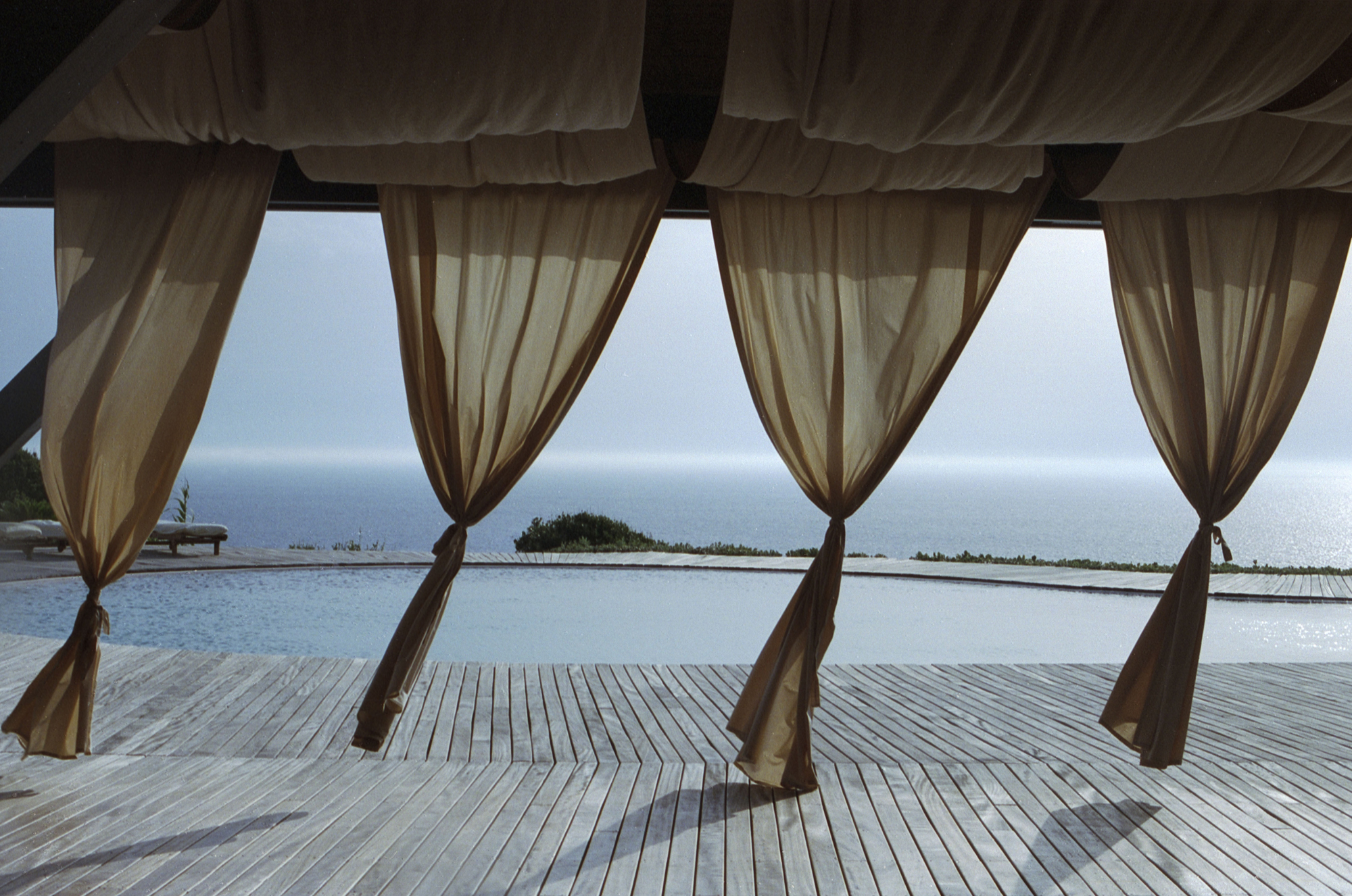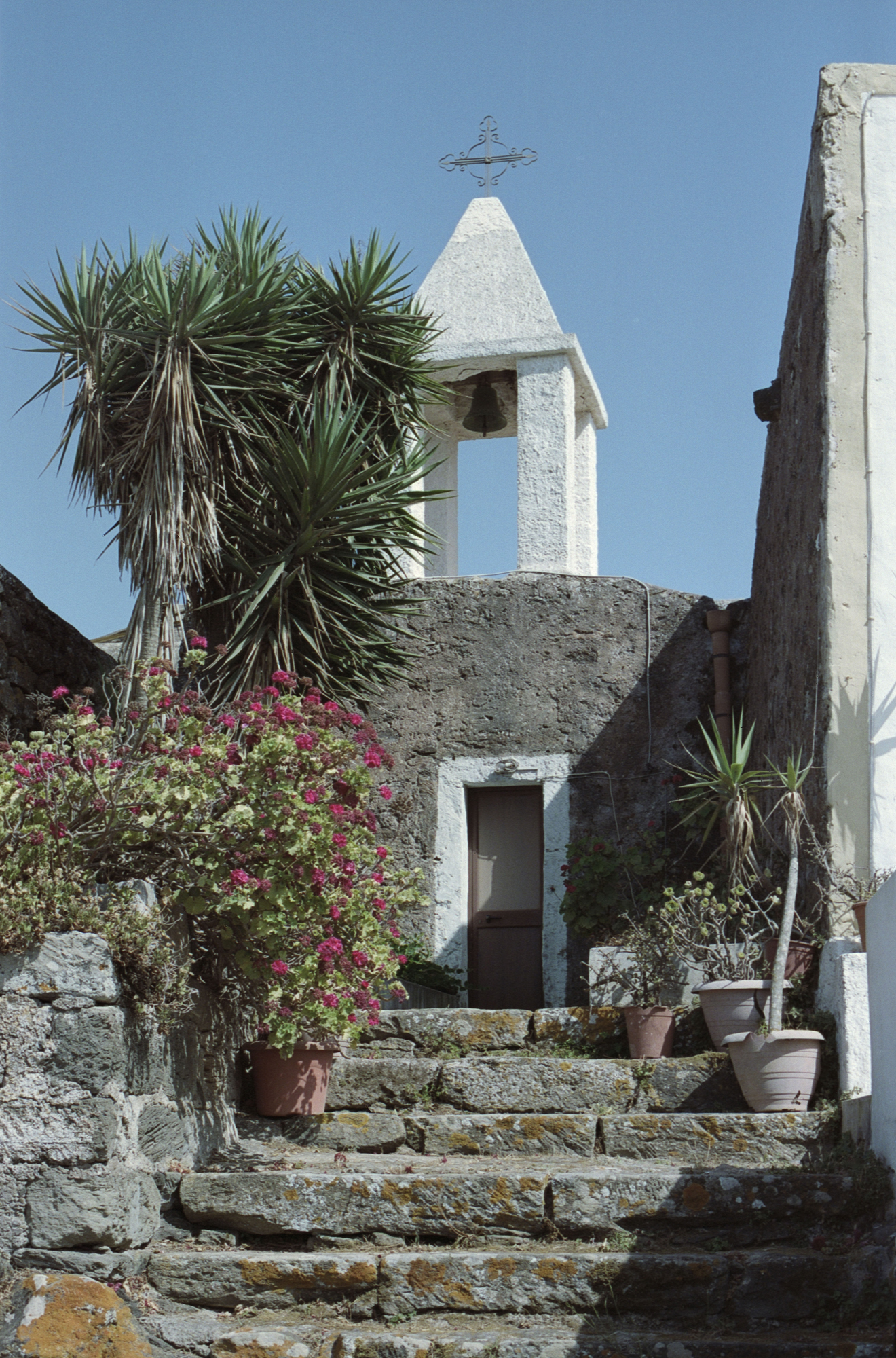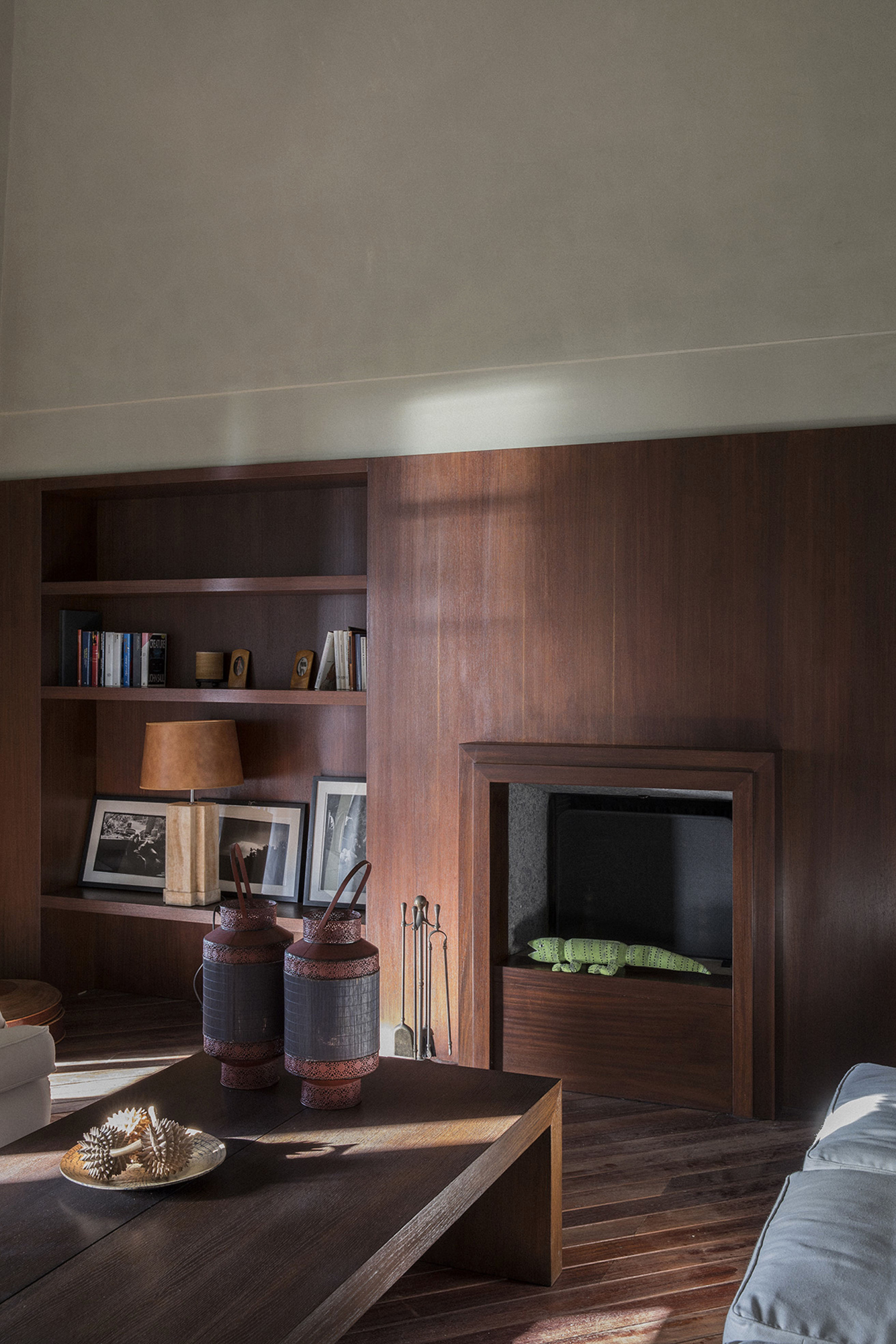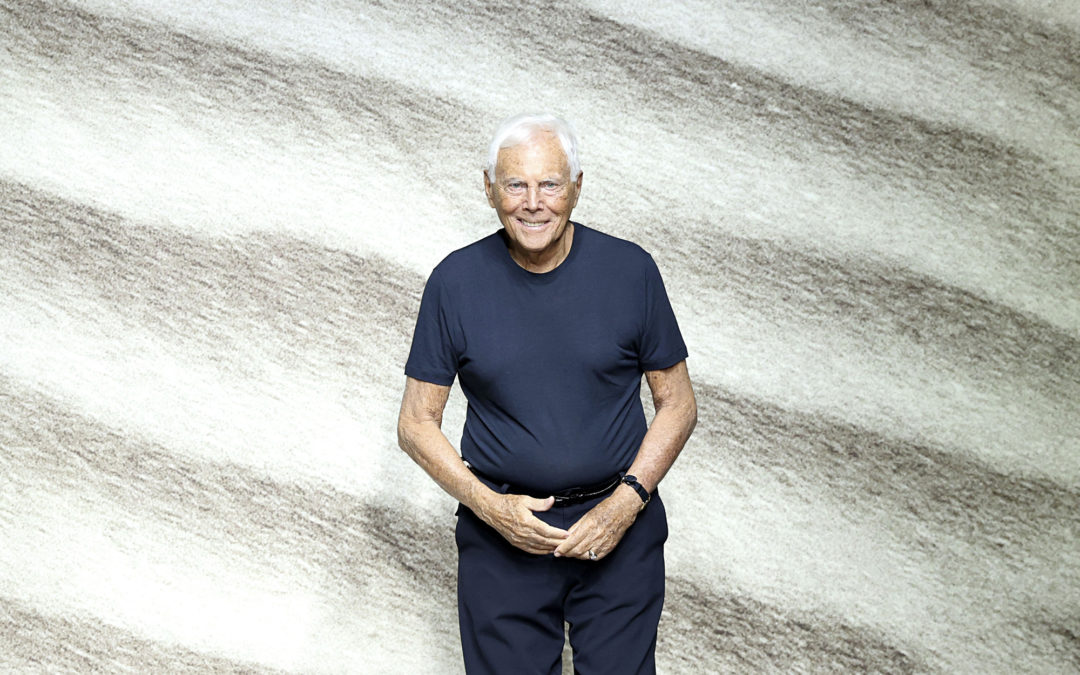HOLIDAY LIKE MR ARMANI…
The king of Italian fashion’s home on the hidden island of Pantelleria is the idyllic destination to dream of sunshine again

With half a century at the helm of one of the planet’s most successful luxury brands under his belt, for Giorgio Armani, a retreat to relax in is more than a luxury, it’s a necessity. ‘Here, I prefer not to think about work,’ says the designer of his pied-à-terre on the Italian island of Pantelleria – a small, isolated volcanic atoll in the Mediterranean, located halfway between Sicily and Africa. ‘A holiday home should make people dream; be a place of escape, a break from the daily grind of work. Of course, it’s impossible for someone like me to really switch off…’
A sanctuary of calming neutrals, clean lines and natural stone, the pad in question certainly does its level best to provide a haven of peace and tranquillity. The panoramic views out to the Mediterranean Sea alone, as seen from the outdoor living room terrace, serve as a welcome distraction.
The world’s richest fashion designer, he has nine properties in his portfolio, including a New York City townhouse and a chalet near St Moritz (and not forgetting one yacht). He considers this villa his summer refuge, conveniently located just a short dash from his Milanese palazzo, ‘yet feels like I am miles away from civilisation’. He stays here for a month every August, spending his days taking the boat out to sea for a swim or browsing the local markets. He tries to visit more often, though – any chance he gets, sometimes even spending Christmas there. ‘It’s beautiful in winter,’ he says. ‘We’d ride around on mopeds, wearing heavy sweaters, going up and down the little roads, through the woods… an incredible feeling of freedom.’

GIORGIO ARMANI WORKED WITH A LOCAL ARCHITECT TO CREATE A DESIGN IN HARMONY WITH THE ENVIRONMENT
Armani first came to the island over 40 years ago, to visit a friend. When he returned a few years later, in 1981, he found himself captivated by the untouched wild beauty of the rough, windswept landscape with its jagged lava cliffs and decided to put down roots.
The original property was an isolated and modest affair, consisting of two abandoned dammusi – ancient settlements that date back centuries, featuring twofoot- thick stone walls carved from volcanic rock and white domed roofs that allow protection from the extreme temperatures. Armani consulted local architect Gabriella Giuntoli to create a design that would work in harmony with the territory.
‘In the beginning, simplicity prevailed, enlivened by exotic touches’
‘She knows the land and therefore understands its nature perfectly,’ he explains. The estate that now stands in its stead spans seven dammusi, with 50 rooms in total, dotted around a central open-air living and dining room. He considers these terraces, located under clear blue skies and designed as an extension to connect interior with exterior, the house’s finest point. The organic shape of the swimming pool follows this methodology too, appearing as if it were a natural lake against the rugged terrain.
But the aspect he is most proud of is the garden, which surrounds the house – a labour of love he has taken care to cultivate over the years. It is here you’ll find spectacular tiaré trees, fragrant rosemary bushes and hedges of jasmine, rare cypress trees, and 300-yearold palm trees imported from Sicily, along with giant cacti, fruiting Indian figs – a favourite local delicacy. It is also here that he does all his best thinking.


‘Even though I wanted a studio where I could retreat to sketch a drawing or make some notes, the best ideas come to me in the gardens or simply under the palm trees of my oasis.’
Every meal is eaten outdoors, in a variety of spots depending on the weather. On hot days, the shaded Oasis terrace offers respite and a gentle cooling breeze. On milder days, the Arabian garden serves as a sun trap, with low tables made of Hammamet straw, laden with pasta that’s served family-style beneath a large orange tree, which called the place home long before Armani himself did.

Inside, the space stands as an ode to his love of earthy colours and raw materials, a taste that he describes as combining ‘nature and escapism’. ‘Furnishing the villa has been a long process, which in a way is never finished because I like to add new items, vintage pieces or those found at markets,’ he says. ‘In the beginning, basic simplicity prevailed, enlivened by a few exotic touches, such as a pair of Moroccan stools in front of my bedroom, or the stone bench on which we sit and chat in the evenings.’ After Armani expanded his empire and founded his interior design arm – Armani/Casa – in 2000, it felt natural for him to incorporate more of his own furniture into the home. Comfortable sofas and low tables lent a modern edge to antique treasures, such as a pair of Chinese armchairs, or objet d’art sourced as souvenirs from travel or given as gifts.
‘Surrounded by the objects I have chosen, things I love and which are inevitably linked to memories, I find a sense of intimacy that makes me feel good,’ he says. ‘As with clothing, one’s home reflects your personality, which is why it is so important to choose items that help bring out your natural persona. You have to feel relaxed and pampered in your own home. For me, home means a feeling of warmth and tranquillity – a refuge for the body and the mind.’

WORDS EMMA McCARTHY PHOTOGRAPHS LUCA DE SANTIS OTHER PHOTO GETTY

